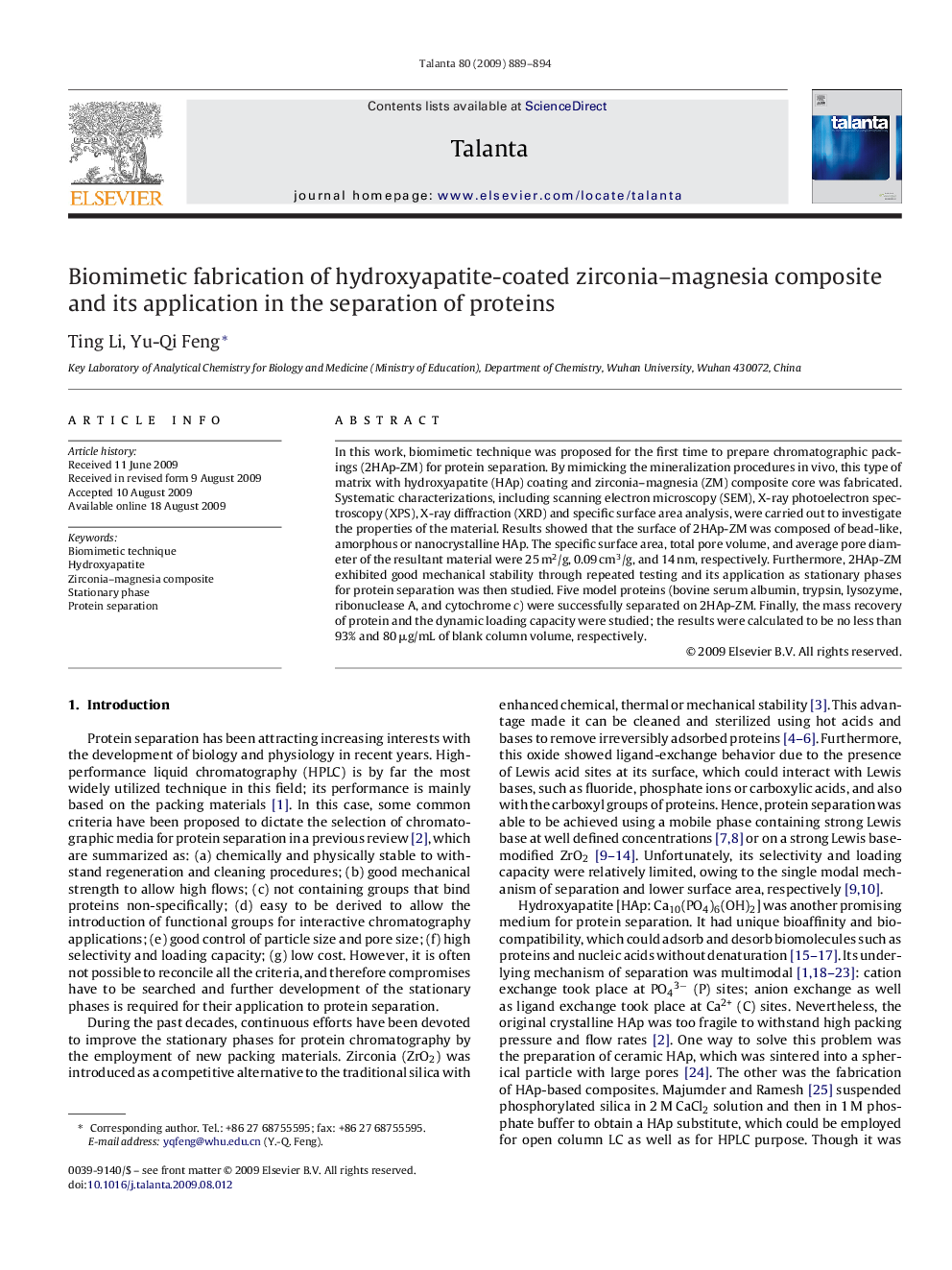| Article ID | Journal | Published Year | Pages | File Type |
|---|---|---|---|---|
| 1246778 | Talanta | 2009 | 6 Pages |
In this work, biomimetic technique was proposed for the first time to prepare chromatographic packings (2HAp-ZM) for protein separation. By mimicking the mineralization procedures in vivo, this type of matrix with hydroxyapatite (HAp) coating and zirconia–magnesia (ZM) composite core was fabricated. Systematic characterizations, including scanning electron microscopy (SEM), X-ray photoelectron spectroscopy (XPS), X-ray diffraction (XRD) and specific surface area analysis, were carried out to investigate the properties of the material. Results showed that the surface of 2HAp-ZM was composed of bead-like, amorphous or nanocrystalline HAp. The specific surface area, total pore volume, and average pore diameter of the resultant material were 25 m2/g, 0.09 cm3/g, and 14 nm, respectively. Furthermore, 2HAp-ZM exhibited good mechanical stability through repeated testing and its application as stationary phases for protein separation was then studied. Five model proteins (bovine serum albumin, trypsin, lysozyme, ribonuclease A, and cytochrome c) were successfully separated on 2HAp-ZM. Finally, the mass recovery of protein and the dynamic loading capacity were studied; the results were calculated to be no less than 93% and 80 μg/mL of blank column volume, respectively.
